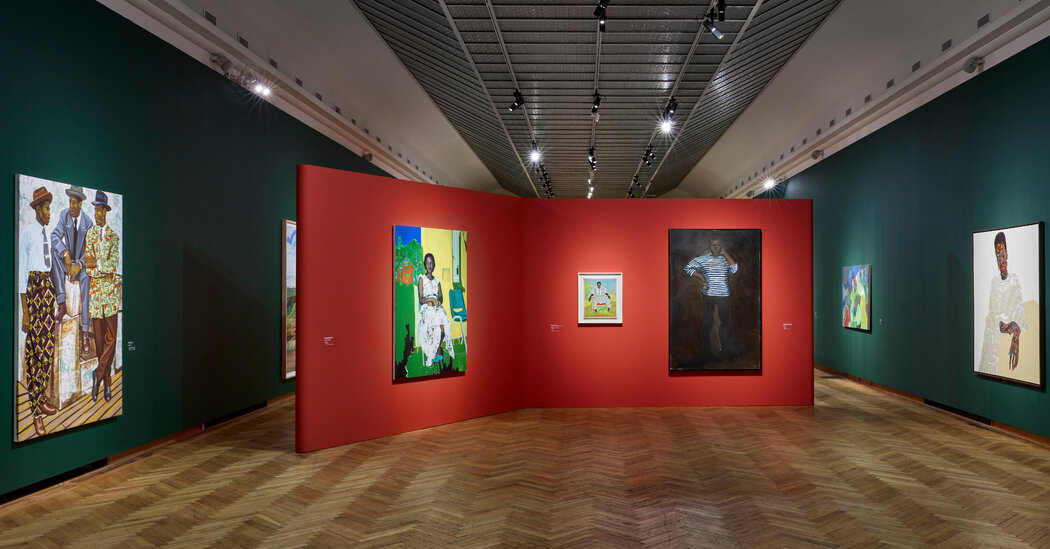
Koyo Kouoh, who will curate the 2026 Venice Biennale, has assembled a huge survey at the Bozar Centre for Fine Arts in Brussels presenting Black life on its own, frequently gorgeous, terms.
At the Bozar Centre for Fine Arts in Brussels, the Cameroonian-born curator Koyo Kouoh — who will oversee the main exhibition at the 2026 Venice Biennale — has filled the vast Art Nouveau galleries with works by artists from Africa and the African diaspora. More than 150 paintings by around 120 artists, most seen in Brussels for the first time, show people and scenes of Black life across the globe.
Kouoh’s show, “When We See Us: A Century of Black Figuration in Painting,” which runs through Aug. 10, originated at the Zeitz Museum of Contemporary Art Africa museum in Cape Town, which Kouoh has helmed since 2019. The show demonstrates the sophisticated breadth of her curatorial approach, which is both aesthetic and art historical, painterly and political.
In the exhibition catalog, Kouoh notes that there has been an explosion of exhibitions exploring Black culture since the 2020 police murder of George Floyd and the subsequent Black Lives Matter protests, with a particular interest in how Black artists represent themselves both as individuals and as members of communities.
Her contribution, “When We See Us,” adapts its title from Ava DuVernay’s 2019 Netflix mini-series about the Central Park Five, a group of Black and Latino teenagers who were wrongfully accused of rape and assault. But where DuVernay’s story of violence and brutality had “They” — “When They See Us” — Kouoh has “We,” pointing to the importance of Black self-expression, or the ability to tell one’s own story. The art on show here does not only exist in relation to oppression or otherness, but also on its own expansive, frequently gorgeous, terms.
The display at Bozar groups paintings according to six loose themes — “The Everyday,” “Repose,” “Triumph and Emancipation,” “Sensuality,” “Spirituality” and “Joy and Revelry” — mixing old and new. (The birth years of the artists range from 1886 to 1999.) Although each painter can be associated with a particular nation, artistic movement or era, Kouoh’s aim is to tease out the hidden connections. We begin to see a wider web that connects these artists across time and space, regardless of borders and boundaries.
We are having trouble retrieving the article content.
Please enable JavaScript in your browser settings.
Thank you for your patience while we verify access. If you are in Reader mode please exit and log into your Times account, or subscribe for all of The Times.
Thank you for your patience while we verify access.
Already a subscriber? Log in.
Want all of The Times? Subscribe.
